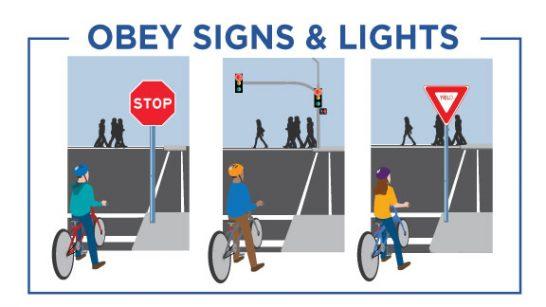Safety in the Spotlight: Are the UCI’s New Rules Doing More Harm Than Good?
In recent months, the cycling world has been abuzz with discussions surrounding the Union Cycliste Internationale’s (UCI) latest safety regulations aimed at curbing risks during competitions. Amid rising concern over athlete safety, these new rules have been implemented with the intention of protecting competitors on the road. However, as the cycling community grapples with the immediate effects, questions arise: Are these regulations truly enhancing safety, or are they inadvertently creating more challenges for riders? In this article, we delve into the implications of the UCI’s changes, examining testimonials from key players in the sport, analyzing data on incidents and injuries, and exploring whether the measures are achieving their intended goals or falling short of expectations. As the debate heats up, one thing remains certain-when it comes to safety, the stakes in cycling are higher than ever.
Balancing Act: Examining the Impact of UCI’s New Safety Regulations on Cyclists’ Well-Being
The recent introduction of new safety regulations by the Union Cycliste Internationale (UCI) has sparked a fervent debate within the cycling community. While these regulations aim to enhance safety measures for competitive cyclists, critics argue that they may inadvertently compromise the athletes’ overall well-being and performance. Key concerns include the potential for increased anxiety among cyclists, as the pressure to adhere to stringent guidelines could detract from the focus needed during races. Additionally, the limitations on equipment and gear settings might restrict individuality and personal comfort, leading to discomfort during critical performance moments.
Moreover, the implications of these regulations extend beyond the physical realm; they touch on mental health as well. Athletes have reported feeling overwhelmed by the constant scrutiny of their compliance with the new rules, creating an atmosphere of distrust rather than camaraderie within the sport. In light of these changes, team dynamics may also shift, as cyclists find themselves navigating not only the competitive landscape but also the intricate web of regulations that govern their movements on the bike. A careful examination of the balance between safety and performance is needed to ensure that the intentions behind these regulations align with the actual welfare of the athletes.
Voices from the Field: Cyclists Weigh In on the Effectiveness and Challenges of Recent Changes
Recent discussions among professional cyclists have spotlighted the repercussions of the UCI’s latest regulatory changes regarding safety protocols. While some riders argue that these measures, such as mandatory helmet standards and stricter race-day inspections, have bolstered rider safety, others express concerns that they may inadvertently complicate racing dynamics. Notably, a few points raised by cyclists in the field include:
- Performance Anxiety: Increased scrutiny on equipment compliance has led to athletes worrying more about technical specifications than their actual performance on the road.
- Heightened Injuries: Some athletes claim that the emphasis on strict compliance may lead to more accidents, as riders rush to adapt to the new requirements just before races.
- Resource Disparities: Not all teams have equal access to resources to meet the new rules, potentially widening the gap between elite teams and smaller outfits.
A recent survey conducted among cyclists showed a split in opinion on the effectiveness of these new regulations, revealing a nuanced landscape of support and criticism. The following table summarizes the main sentiments:
| Perspectives | Percentage of Respondents |
|---|---|
| Support for Improved Safety | 52% |
| Concerns over Implementation | 27% |
| No Significant Change | 21% |
This data underscores the complex reality that while safety should remain a priority, the implementation of rules must consider the varied experiences and needs of all cyclists. The push for safer racing environments continues to evolve as stakeholders weigh the intended benefits against real-world challenges.
Path Forward: Recommendations for Enhancing Safety Without Compromising Competitive Integrity
To cultivate a safer environment in competitive cycling while preserving the integrity of the sport, the UCI should adopt a multifaceted approach. Implementing advanced technology-driven monitoring systems can provide real-time data on rider performance and safety conditions, facilitating informed decisions without hampering competitive spirit. Furthermore, introducing regular safety training workshops for teams, athletes, and race officials could enhance awareness and preparedness, fostering a culture where safety is the top priority without detracting from the thrill of competition.
Additionally, the UCI might consider establishing a collaborative framework with athletes, teams, and sponsors to gather diverse insights and suggestions on safety measures. This could lead to the development of a cyclist-led advisory board that actively participates in policymaking, ensuring that regulations reflect the real experiences and concerns of those on the ground. By prioritizing open dialogue and transparency, the UCI can build trust and support within the cycling community, ultimately leading to a safer environment that respects both competitive integrity and athlete welfare.
In Retrospect
In conclusion, the UCI’s recent rule changes aimed at enhancing safety within cycling have sparked significant debate among athletes, teams, and fans alike. While the intention behind these regulations is commendable, the practical implications raise questions about their effectiveness and unintended consequences. As the sport navigates this evolving landscape, it remains crucial for stakeholders to engage in open dialogue, ensuring that safety measures are not only well-intentioned but also practical and beneficial for all involved. As the cycling community continues to assess these policies, one thing is clear: finding the right balance between safety and competition will be vital for the future of the sport. The coming months will be pivotal in determining whether these new rules are a step forward or a misguided effort that complicates the pursuit of excellence on two wheels.











